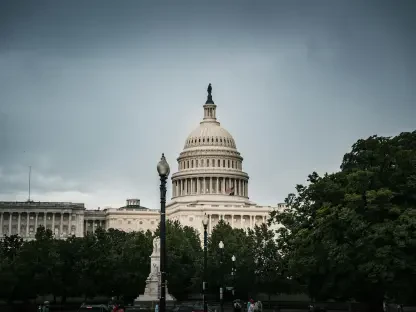Seoul’s office real estate market has seen a significant rally in the first quarter, as vacancy rates dropped to 2.8%, marking a promising turnaround in the sector. Critical to this upward movement are the increased absorption rates and robust leasing activities across key districts, underscoring a burgeoning demand for office spaces. Among these, Yeouido made notable strides, demonstrating the most substantial improvement with a significant decrease of 249 basis points quarter-on-quarter, achieving a 4.3% vacancy rate. This remarkable change was largely driven by the completion and full occupancy of Anchor 1. Gangnam, however, presented a contrasting picture, experiencing a setback due to negative net take-up linked to outstanding moves at Center Field.
Emerging Rental and Leasing Trends
Yeouido’s Strategic Advancements
Yeouido’s impressive decline in vacancy rates can be attributed to strategic developments such as the completion of major projects like Anchor 1. The full occupancy of these new spaces substantially influenced the area’s market dynamics, offering insights into the effectiveness of contemporary development strategies. This trend highlights a successful approach to urban planning and space utilization, combining attractive commercial real estate with strategic occupancy plans. The shift in focus to creating well-integrated business hubs not only meets local demand but also attracts international interest, which can fuel further investment. This attention to high-quality developments exemplifies how targeted initiatives can drive results, setting a precedent for other districts aiming to optimize their space utilization strategies.
Gangnam’s Temporary Stall
In contrast to Yeouido’s growth, Gangnam faced challenges with a negative net take-up, primarily due to anticipated relocations at Center Field. This situation reflects a temporary pause rather than a persistent downturn, as various promising developments are on the horizon that could reverse this trend. The area’s minor setback underscores the complexity inherent in urban planning within high-demand regions, with ongoing projects poised to fill vacant spaces. Gangnam remains an attractive hub for businesses, indicating an expected recovery once the pending moves materialize and new leases take effect. The area’s potential for rebounds lies in its ability to adapt and restructure, ensuring sustained interest and continued growth prospects for the future.
Investment Climate and Office Deal Volume
Real Estate Investment Dynamics
Seoul’s real estate market is experiencing a robust office deal volume, reaching approximately KRW 4.9 trillion, indicative of sustained investor interest. The lower financing rates have played an integral role in spurring this engagement, making it an opportune time for investment. The impact of this financial environment is twofold: it encourages local investment and piques the interest of international investors looking to capitalize on favorable market conditions. A key transaction underscoring this trend is IGIS Asset Management’s pre-purchase of One Grove (CP4) in Magok for about KRW 1.8 trillion, showcasing confidence in the market’s future prospects. This transaction exemplifies the substantial allure of South Korea’s property market, which is likely to benefit from global investment flows seeking high-yield opportunities.
Trends Among Budget-Conscious Tenants
A notable trend emerges with budget-conscious tenants gravitating toward more affordable areas like Magok, indicating a shift from traditionally popular core markets. This migration signals a growing demand for cost-effective office solutions, impacting future vacancy rates, especially within the CBD. This shift is partly driven by burgeoning economic activity in the region, which offers competitive advantages through lower costs. Furthermore, the movement to alternative areas suggests potential occupants’ preference for attractive leasing terms, such as extended rent-free periods provided by landlords attempting to retain and attract tenants. As businesses become more budget-aware, this trend might redefine market strategies and encourage innovative tenant attraction approaches, influencing occupancy equilibria in the city.
Outlook and Market Predictions
Seoul’s office real estate market experienced a noteworthy upswing in the first quarter, as vacancy rates fell to 2.8%, signaling a positive shift for the sector. This improvement is driven by increased absorption rates and strong leasing activities across major areas, highlighting a growing demand for office spaces. Yeouido stood out with the most pronounced progress, showing a significant drop of 249 basis points from the previous quarter, resulting in a vacancy rate of 4.3%. This impressive change was primarily due to the completion and full occupancy of the Anchor 1 building. The demand surge in Yeouido reflects overall economic resilience and strategic planning in the district. Conversely, Gangnam faced challenges, with a limited setback resulting from negative net take-up connected to pending relocations at Center Field. This dichotomy shows the varied dynamics within Seoul’s real estate landscape, presenting a mixed yet optimistic picture as developers adjust to evolving market conditions and tenant preferences.









